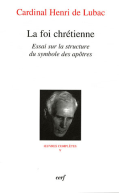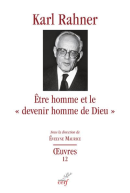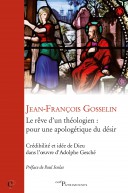Architecture et Liturgie
de Louis Bouyer
Collection Bibliothèque du Cerf
112 pages - févr. 2009
12,00€
« Quand nous regardons les églises qui furent adaptées ou construites pour abriter la liturgie chrétienne au meilleur de sa fraîcheur et de sa puissance créatrice, nous voyons que l'important n'est pas dans une série quelconque de détails déterminés, pris isolément. C'est plutôt dans une relation dynamique des différents foyers de la célébration, incarnée en des éléments divers et dans leur arrangement cohérent. Ceci peut donner naissance, comme cela a été le cas, à une variété presque illimitée de formes. Mais toutes ces formes deviennent mortes dès qu'on les copie matériellement, sans bien comprendre ce qui leur a donné leur sens. Il n'y a que l'histoire qui puisse nous donner la clef de leur genèse. Nous voyons alors que c'est la fonction vitale seule qui peut expliquer l'organe... » Cet ouvrage, rédigé en anglais et publié en 1967, est composé de cinq chapitres brefs qui font le point sur les données essentielles de la tradition des vingt derniers siècles, tant en Orient qu'en Occident, puis un dernier chapitre, plus long, qui considère toutes les questions qui se posent au renouveau du culte chrétien. L'architecture liturgique ne trouve, selon Bouyer, sa propre voie que lorsqu'elle prend conscience de la « connaissance de Dieu » qu'elle doit « incarner », lorsqu'elle se conforme à l'« obéissance joyeuse » : « une communion à la présence très sainte du Dieu vivant parmi nous ».
--
“When we look at churches which were adapted or built to house the Christian liturgy at the apogee of its bloom and creative force, we see that what matters is not some series of specific details observed individually. Rather, it is the dynamic relationship between the different foyers of celebration, incarnated by diverse elements and the coherence of their arrangement. This can engender, as has been the case, an almost unlimited variety of forms. But all these forms wither and die when they are copied materially without any understanding of what gives them their meaning. History alone can provide us with the key to their genesis. Then we see that only the vital function can explain the organ…” This book, written in English and published in 1967, is composed of five short chapters which take stock of the essential facts of the last twenty centuries of tradition, in the East as well as the West. A final and longer chapter considers all the questions posed by the revival of the Christian faith. Liturgical architecture, according to Bouyer, only finds its path when it becomes aware of the ‘knowledge of God’ which it must ‘incarnate’, and when it gives in to ‘joyous obedience’: ‘a communion with the most holy presence of the living God amongst us’.
--
“When we look at churches which were adapted or built to house the Christian liturgy at the apogee of its bloom and creative force, we see that what matters is not some series of specific details observed individually. Rather, it is the dynamic relationship between the different foyers of celebration, incarnated by diverse elements and the coherence of their arrangement. This can engender, as has been the case, an almost unlimited variety of forms. But all these forms wither and die when they are copied materially without any understanding of what gives them their meaning. History alone can provide us with the key to their genesis. Then we see that only the vital function can explain the organ…” This book, written in English and published in 1967, is composed of five short chapters which take stock of the essential facts of the last twenty centuries of tradition, in the East as well as the West. A final and longer chapter considers all the questions posed by the revival of the Christian faith. Liturgical architecture, according to Bouyer, only finds its path when it becomes aware of the ‘knowledge of God’ which it must ‘incarnate’, and when it gives in to ‘joyous obedience’: ‘a communion with the most holy presence of the living God amongst us’.
- Dimensions : 115x175x7
- ISBN : 9782204087827
- Poids : 120 grammes
Avec la collaboration de : G. Lecourt
DU MÊME AUTEUR
> VOIR TOUS LES LIVRES DE l'AUTEUR
DANS LA CATÉGORIE
La foi chrétienne
Essai sur la structure du symbole des apôtres
de Henri de Lubac
672 pages - avril 2008
Être homme et le "devenir homme" de Dieu
Etudes sur le fondement dogmatique, l'anthropologie théologique et l'eschatologie
de Karl Rahner
712 pages - juin 2019
Le rêve d’un théologien : pour une apologétique du désir
de Jean-François Gosselin
342 pages - sept. 2016











